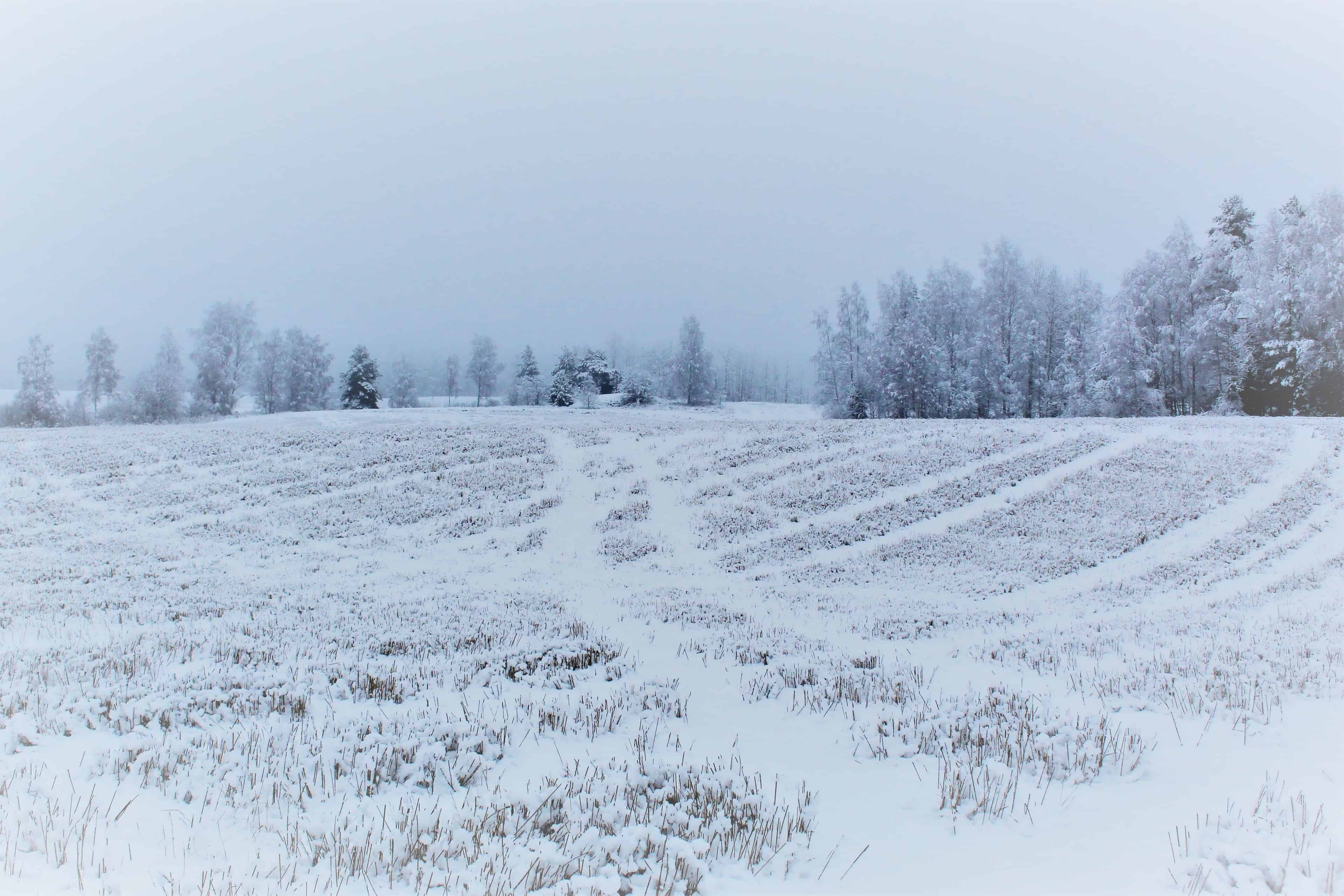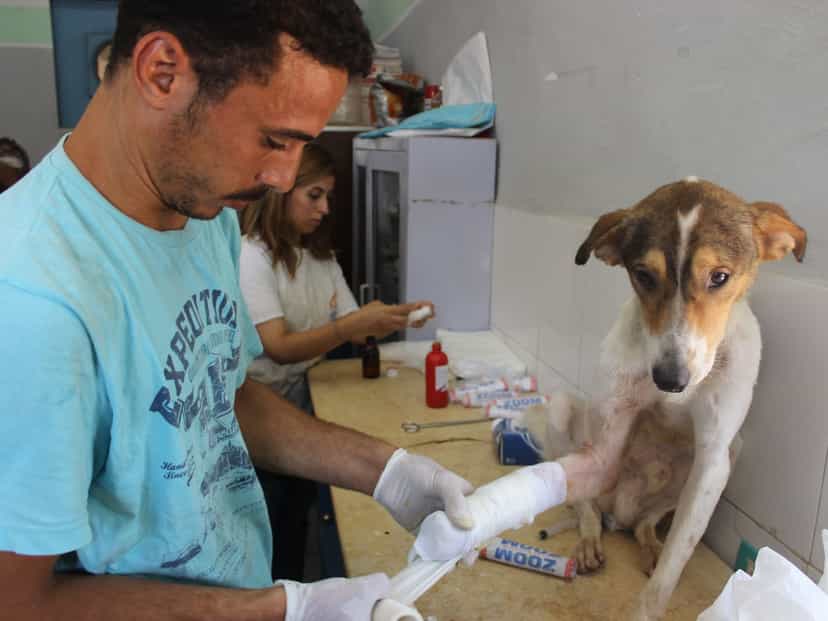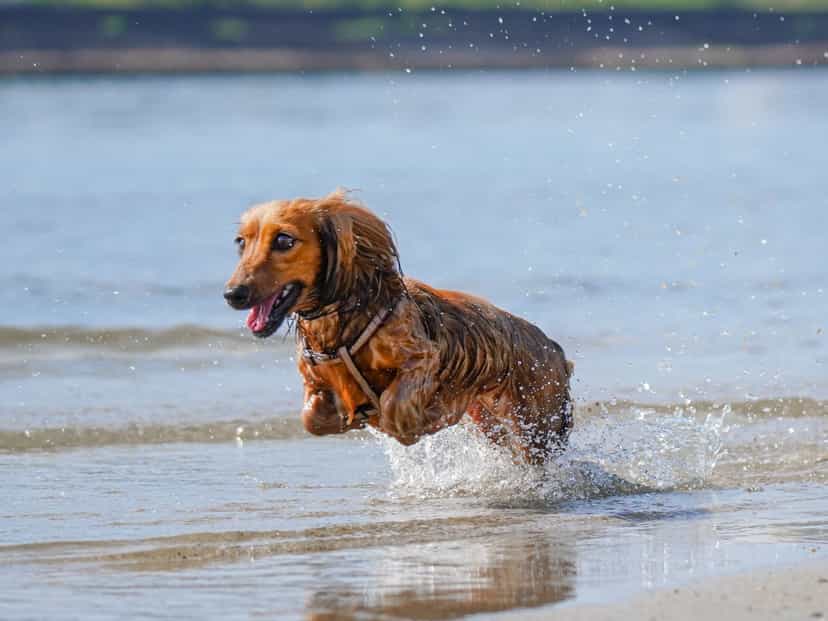
Despite the cold weather, your dog will still enjoy a wintry walk. However there are some risks that you need to be aware of when out with your dog at this time of year. Yvonne Jones from Dog First Aid Merseyside, a dog first aid trainer, shares some safety advice about walking your dog in the winter.
IS IT SAFE TO WALK DOGS IN THE SNOW?
Some puppies will love playing in the snow; however, for others it can cause them pain and distress. Ice balls can develop in the fur, particularly around ankles and in between toes. These need to be gently thawed when home using warm water. Snow and ice can also cause splits in pads and frostbite.
Before you head out for a walk in the snow put some Vaseline on your dog’s pads to protect them, or invest in some boots to cover your dog’s paws.
ANTIFREEZE AND DOGS
Antifreeze is sometimes added to gritting salt and may also be present in roadside puddles so don’t allow your dog to drink from these. If walking where roads and pavements have been gritted remember to rinse and dry paws thoroughly when you get home. As well as being abrasive and drying to the pads of the paws, gritting salt may also cause chemical burns and be highly toxic if ingested by your puppy’s from licking their paws after exposure.
SHOULD MY DOG WEAR A COAT IN THE WINTER?
There are ways to decide if your dog might benefit from a winter coat. You should take into consideration what your puppy’s coat characteristics are. If your puppy has a short, slick coat they will have less insulation than a puppy which has a thick coat. A puppy with a thicker coat is most adapted for the cold. If you have a hairless breed, such as a Chinese Crested, they would probably appreciate a coat for any outdoor time during winter.
WALKING DOGS DURING DARK EVENINGS
When walking at night, make sure to keep yourself and your dog both safe AND visible. Dogs should always have reflective collars, harnesses or a light. Wear reflective and/or light clothing yourself to make it easier for drivers to spot both you and your dog.
Use a short lead and where possible, keep to lighted pathways. Pay attention to your surroundings and try not to use headphones or your mobile phone, unless it is an emergency, as this may attract unwanted attention.
HIDDEN WOODLAND DANGERS
ARE CONKERS POISONOUS TO DOGS?
Although fun to collect with children, conkers can be poisonous to dogs. They contain aesculin which is toxic to dogs. Most larger puppies would need to ingest several to suffer severe poisoning, but just one or two could be dangerous to smaller puppies. There is also the risk of intestinal blockages too.
There are other hidden woodland dangers. These include:
Acorns
The toxic ingredient in acorns is thought to be tannic acid, which causes liver and kidney damage. Like conkers, acorns can also cause intestinal blockages.
Fungi
Although some wild mushrooms and toadstools are harmless, others are extremely poisonous to your dog. Since it’s very difficult to tell between them, it is advisable to keep your pup away from them.
Slugs & snails
Unfortunately for us in the UK, we see far more rain at this time of year, bringing with it the inevitable slugs and snails. They can be tempting to dogs to eat, which can lead to lungworm. Symptoms of lungworm range from mild to very severe and can include breathing problems, lethargy and poor blood clotting ability. Call your vet if you are worried that your dog has eaten a slug or snail and is displaying any of these symptoms.
Be aware of slugs and snails in your garden too – dogs can get lungworm by chewing toys or treats that have been outside and have slugs or their slime on them. If you have slugs or snails in your garden, please don’t use slug or snail pellets, but use a pet-friendly alternative instead. The common ingredient in slug pellets – metaldehyde – is poisonous to dogs.
WHAT TO DO IF YOU SUSPECT YOUR DOG HAS EATEN SOMETHING POISONOUS?
If you suspect your puppy may have eaten a conker, mushroom, acorn, slug or snail, please call your vet for advice. It’s a good idea, if possible, to take a photograph or a sample (while wearing gloves) of the item you think they may be eaten.
MUDDY WALKS WITH DOGS
Whilst it is still extremely rare and rather a mystery, Alabama Rot (or CRGV) appears to be linked to walking in muddy areas. This nasty disease can damage the blood vessels of the skin and cause kidney damage. Be vigilant for lesions – particularly on the paws, legs and tummy.
Protect your dog by washing their paws and legs, if muddy, after a walk.
EXPLORING NEW WALKS WITH A PUPPY
With puppies, when you take them somewhere new, it’s a good idea to keep them on the lead the first time you go there. When you do finally let your puppy off lead to explore, take extra care to ensure that it is safe to do so. And take extra care when it’s windy as this may affect your puppy’s recall. If you spot a potential danger, you will want him to come back when called.
IN AN EMERGENCY – BE PREPARED
It’s a good idea to take a first aid kit with you when you go for a walk, containing all the basics. These are:
- Medium and Large Dressings
- Conforming Bandages
- Foil Blankets
- Pods of Saline
- Gauze Swabs
- Microporous Tape
- Vinyl Gloves
- Alcohol Free Cleansing Wipes
- Tweezers
- Scissors
- Tick Twisters
Kits are available to buy here Shop – Booking by Bookwhen
Make sure to have your vet’s contact number, either saved into your phone or written somewhere you can easily find. If you are walking somewhere that’s not near your own vet, you may need to contact a vet local to where you are. Dog Warden and Park Rangers’ numbers are also useful to have in an emergency.


